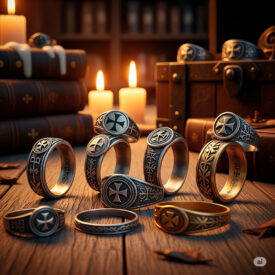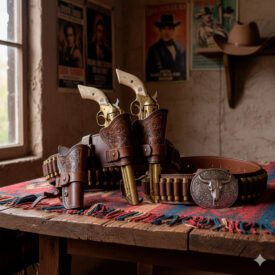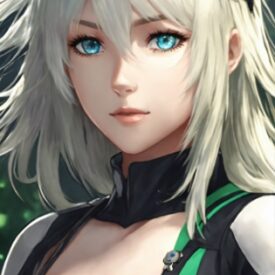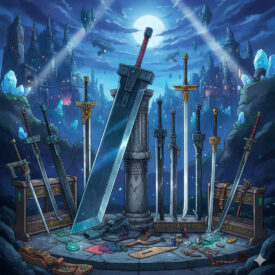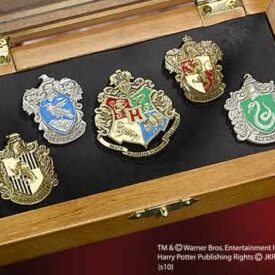Have you ever wondered which Final Fantasy VII weapon resonates most with your spirit? Are you a guardian of light, like Cloud, or are you drawn to Sephiroth’s shadowy power? In the vast universe of Final Fantasy VII, two swords reign with unparalleled iconic status: the Buster Sword and the Masamune.
These pieces are not just legendary weapons in the game; they are extensions of their wielders, Cloud Strife and Sephiroth, respectively, and thus have become cult objects for collectors and cosplay enthusiasts. If you find yourself at a crossroads choosing your next replica, this article will guide you through the history, symbolism, and unique characteristics of each so you can make the most epic decision.
From Forge to Cosplay: Chronology of the Buster Sword and the Masamune
To understand the essence of these swords, it is essential to know their legacy. Here we present a chronology that covers everything from their conception to their impact in the real world.
| Era | Event |
|---|---|
| Design and concept (real world) | |
| Buster Sword Design | Tetsuya Nomura defined it as a “Giant Kitchen Knife”: an imposing, minimalist, and industrial design that became a visual symbol of the franchise. |
| Masamune Concept | Nomura confirmed its supernatural component: a katana that can change length. Its aesthetics are inspired by the Musashi vs. Kojirō rivalry (long, thin swords). |
| Origin and lineage (in-universe) | |
| Buster Sword’s Lineage | Represents legacy and honor: Angeal → Zack Fair → Cloud Strife. Symbolizes sacrifice, heritage, and the weight of the past. |
| Forging and myth of the Masamune | According to the expanded story, it was forged by a blacksmith who massacred his village; the sword was linked to a cursed spirit that Sephiroth defeated and from whom he recovered the weapon. |
| Appearance in Final Fantasy VII (original game) | |
| Usage in the game | Cloud wields the Buster Sword as his initial weapon; Sephiroth is distinguished by his extremely long Masamune. The rivalry and symbolism reinforce the identity of both characters. |
| Narrative expansion and sequels | |
| Advent Children and the Buster Sword | In Advent Children, Cloud leaves it on the cliff where Zack died (a symbolic grave). Cloud introduces the Fusion Sword, an evolution that splits into six functional swords and retains the full Buster shape. |
| Masamune in the franchise | Maintains its iconic status; in other titles of the saga, it appears associated with special properties (e.g., elemental connections like Holy in cross-mentions). |
| Replicas, materials, and use in cosplay / LARP | |
| Buster Sword Replicas | Available in metals (stainless steel, alloys) and safe versions for cosplay/LARP in PU Foam (typical length ≈ 102 cm / 40 in). Replicas seek a balance between authentic appearance and maneuverability. |
| Masamune Replicas | Similar materials are assumed for display katanas; there are katana accessories for cosplay. The Masamune’s enormous length makes it visually striking but more difficult to handle at events and LARP. |
| Final considerations for purchase (contemporary) | |
| Iconicity and purpose | If immediate recognition and a piece with strong hero/legacy symbolism is sought, the Buster Sword is the most iconic option. If a katana aesthetic and power/corruption symbolism are preferred, the Masamune is preferable. |
| Use in collection vs cosplay | For collection: high-quality metal replicas (Buster stands out for detail and balance). For cosplay/LARP: PU Foam versions are advisable; the Buster is manageable in safe versions, the Masamune may present problems due to its length. |
| Alternatives | For Cloud fans seeking character evolution, the Fusion Sword (Advent Children) is a thematic alternative to consider. There is no equivalent outstanding alternative for Sephiroth in terms of weapon evolution. |
The Imposing Buster Sword: A Legacy of Heroes
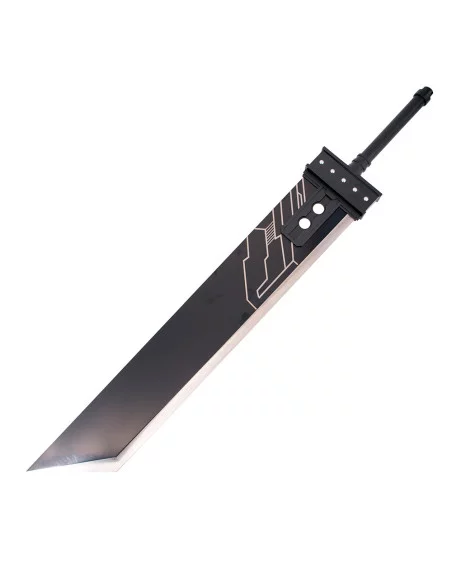
The Buster Sword, Cloud Strife’s distinctive weapon, is much more than a gigantic blade; it is a beacon of resilience and the weight of a legacy. Its design is imposing and minimalist, a mass of raw metal with a detailed guard, devoid of superfluous ornamentation, which gives it an unmistakable visual force. Its silhouette is so characteristic that any fan recognizes it instantly.
This colossal sword not only cuts; it tells a story of heritage, suffering, and sacrifice, handed down from Angeal to Zack Fair and, finally, to Cloud. It is the franchise’s “cult weapon,” a symbol of a hero who carries the weight of the world on his shoulders.
The Elegant Blade of Corruption: Sephiroth’s Masamune
On the opposite side of the spectrum, we find the Masamune, the uncommonly long and elegant katana wielded by Sephiroth. Its design is the antithesis of the Buster Sword, stylized and lethal, reflecting the complexity and dark charisma of its wielder.
The Masamune is not just a sword; it has a supernatural component that allows it to change shape, lengthening or shortening at Sephiroth’s will. Its history, expanded in new narratives, suggests a mysterious origin and a link to a curse, which makes it an almost living weapon, forged not only in metal but in tragedy and power.
Comparative Analysis: Buster Sword vs. Masamune
Here we break down the key differences so you can choose the replica that best suits your calling.
| Aspect | Buster Sword (Espada Mortal) | Masamune |
|---|---|---|
| Design and Aesthetics | Imposing, minimalist, and industrial. Giant and disproportionate blade, without ornaments. Visual force of “raw metal mass.” | Uncommonly long and stylized katana. Elegant, with a lethal edge. More delicate but effective design. |
| Symbolism | Brute force, hero’s solitude, weight of a difficult past. Heritage, suffering, and sacrifice. | Corruption, dark power. Cloud/Sephiroth rivalry (Musashi/Kojirō). “Almost living” object with a history of tragedy. |
| Replicas and Materials | Made with stainless steel or resistant alloys. Metal hilt. PU Foam versions for cosplay/LARP (102 cm). Seek balance and maneuverability. | Standard materials for decorative replica katanas. Cosplay accessories. May be more delicate and flexible due to its length. |
| Relevance for Cosplay | The most recognizable in Final Fantasy. Perfect piece for fans, collectors, and cosplayers. | Highly recognized, but its popularity focuses on Sephiroth. Its length can make it difficult to handle at events. |
| Iconicity for Collectors | Maximum iconic status. Represents legacy and pure heroism. | High symbolic charge and spectacular aesthetics. Faithful to Sephiroth’s original design. |
| Physical Sensation (replicas) | Voluminous, heavy, and robust. Simple but powerful design. May be less practical for continuous display due to its weight. | Delicate and flexible due to its length and slenderness. May generate a sense of fragility. |
| Collection Purpose | Ideal if a detailed, elegant piece with strong symbolism of legacy and heroism is sought. | Ideal if a katana aesthetic and the symbolism of power and corruption are preferred. |
| Fidelity vs. Functionality | Robust design with a sense of real solidity. | Prioritizes visual appearance, sacrificing use resistance. |
Your Epic Decision: Which Replica Does the Hero in You Choose?
The choice between Sephiroth’s Masamune and Cloud’s Buster Sword is not just about metal and design; it’s about the connection you feel with the Final Fantasy VII universe. Each majestic sword offers you a replica that reflects a different path: the weight of heroism or the elegant shadow of power.
For the collector seeking a symbol of legacy and heroism, the Buster Sword offers an imposing presence and a story that resonates strongly. Replicas, with their robustness and detail, capture the essence of a champion who does not give up. On the other hand, if you are drawn to the sinister elegance and refined design of a legendary katana, the Masamune awaits you. Its replica, though more delicate due to its length, is a visual work of art that evokes Sephiroth’s mystery and power.
Whether to complete your Sephiroth cosplay, Cloud’s, or simply to adorn your space with a piece of Final Fantasy magic, the choice is yours. Will you be the bearer of justice or the owner of radiant darkness?
Clarifying doubts about the Masamune and the Buster Sword in Final Fantasy VII
What is the story behind the Masamune in Final Fantasy VII?
The Masamune in Final Fantasy VII is Sephiroth’s iconic sword, characterized by its great length and unique appearance. Its backstory has been expanded in recent content such as Final Fantasy VII Ever Crisis, where it is revealed that the blade has an organic quality that allows it to lengthen or shorten according to Sephiroth’s needs. This makes it an almost living weapon, not just a simple saber.
As for its origin, it’s not entirely clear in the game’s original narrative. However, there are theories and new stories suggesting that the Masamune could have links to Wutai culture or history, possibly a legacy or inheritance Sephiroth received in his childhood, although these ideas are not fully confirmed in the official story.
In summary, the Masamune is more than a powerful sword; it is a personal symbol of Sephiroth, with unique properties and a mystery surrounding its provenance that has been further explored and enriched in spin-off works and recent remakes.
What characteristics make the Buster Sword unique compared to other Final Fantasy swords?
The Buster Sword is unique in Final Fantasy for being a symbolic and emblematic weapon that represents the legacy and heroism of key characters, especially Cloud Strife and Zack Fair. It is distinguished by its imposing size, considerable weight, and robust design; more than a purely cutting weapon, it is also used as a bludgeoning weapon to preserve its integrity in respect of its history. In addition, its ability to cut even metal reflects its great power. The Buster Sword also possesses deep emotional and narrative value, passing from Angeal to Zack and finally to Cloud, symbolizing the transmission of courage and sacrifice.
Key unique characteristics:
- Notable size and weight (approx. 135 cm and 6 kg in replicas), which make it imposing and difficult to handle compared to other fantasy swords.
- Hybrid use as a cutting and bludgeoning weapon to avoid damage due to its symbolic value.
- Ability to cut metal, showing its offensive power.
- Iconic, robust, and simple design, representative of the saga.
- Its narrative importance as a heroic relic in the Final Fantasy VII universe.
These characteristics make it different from other swords, which tend to be more decorative, with different focuses on design, size, or magical effects, while the Buster Sword combines physical power with deep narrative symbolism and a minimalist but recognizable aesthetic.
How can you obtain the Masamune in Final Fantasy VII?

The Masamune in Final Fantasy VII is not a weapon that the player can obtain or use directly during the original game. It is the iconic weapon of the character Sephiroth and appears as part of the story and cinematic scenes, but it is not available for the player’s inventory nor as an interchangeable or equippable item.
In some modified versions or mods and in certain spin-offs or derivatives of the saga, the Masamune can be obtained through crafting recipes or special battles, but in the standard classic Final Fantasy VII, it is not possible to obtain or use it directly.
Therefore, in the original Final Fantasy VII, the Masamune cannot be obtained as a playable weapon.
What other Final Fantasy video games have iconic swords similar to the Masamune and the Buster Sword?
In addition to Sephiroth’s Masamune and Cloud’s Buster Sword in Final Fantasy VII, the Final Fantasy saga features several iconic swords that have left their mark on video game history:
- Excalibur: Present in almost all titles in the series, this legendary sword is usually one of the best weapons in the game and symbolizes nobility and power. In various Final Fantasy games (e.g., FFI, FFV, FFVI, FFIX), Excalibur is an epic reward and a recurring symbol of heroism.
- Platinum Sword and Tempestas: In Final Fantasy XVI, the upgraded Platinum Sword and Tempestas stand out for their importance in progression and their distinctive design.
- Ultima Weapon: Another common name in the saga. This weapon appears in several games (such as FFVI, FFVII, FFVIII, FFIX) as a superior cutting sword, sometimes linked to the character’s maximum power.
- Ragnarok and Apocalypse: In Final Fantasy VII, these alternative swords for Cloud also have a special design and relevance within the game.
- Murumasa/Murasame: A Japanese name that appears as a powerful sword in various games in the series, such as FFV and FFVI.
Additionally, other titles in the saga, such as Final Fantasy IX, stand out for personalized weapons for their protagonists, such as Steiner’s Sword (captain of the Alexandria guard), which has its own evolution and prominence. The list is extensive, and each main game usually includes at least one or two iconic swords, either for their history, unique design, or power in battle.
What are the differences between the Masamune and the Buster Sword in terms of design and functionality?
Masamune
- Design: The Masamune is a traditional Japanese katana, known for its balance, artistic beauty, and harmonious proportions. It generally features a pronounced curve and a long handle, suitable for both mounted and ground strikes. It was forged with high-quality metals and advanced techniques for the era.
- Functionality: The Masamune is considered an exceptionally sharp and resilient sword, but its most outstanding feature is its symbolism: in legends, it only cuts what needs to be cut, avoiding harm to innocent or living beings who do not deserve to die. It is not just a weapon, but a symbol of justice and discernment, associated with technical and spiritual perfection.
- Usage: It was used by high-ranking samurai and is considered a sacred weapon, reflecting the honor and ethics of its wielder.
Buster Sword (Muramasa)
- Design: Although also a Japanese katana, the Muramasa sword (often known as “Buster Sword” in Western or fictional contexts) is famous for the legend of its ruthless edge and violent temperament. It has a similar appearance to the Masamune, but legend describes it as a “cursed” or “bloodthirsty” sword, emphasizing its destructive capacity without distinction.
- Functionality: According to stories, the Buster Sword cuts everything it touches, including living and innocent beings, without discrimination. That is, it does not possess the “ethical” quality attributed to the Masamune. Its edge is legendarily sharp, but it is attributed a malignant or perverse character, becoming a symbol of indiscriminate violence.
- Usage: In popular culture, the Muramasa sword is seen as a tool of destruction, associated with madness, tragedy, and imbalance, which contrasts with the aura of nobility and righteousness of the Masamune.
| Aspect | Masamune | Buster Sword (Muramasa) |
|---|---|---|
| Design | Balance, beauty, proportion | Sharp, similar, but with a dark aura |
| Blade Functionality | Only cuts what is necessary | Cuts everything indiscriminately |
| Symbolism | Justice, discernment, honor | Violence, curse, destruction |
| Legend | Sacred sword, does not harm innocents | Cursed sword, bloodthirsty |
Regardless of whether you choose the mythical length of the Masamune or the blunt steel of the Buster Sword, having a Final Fantasy replica is the ultimate limit break for any collector.

